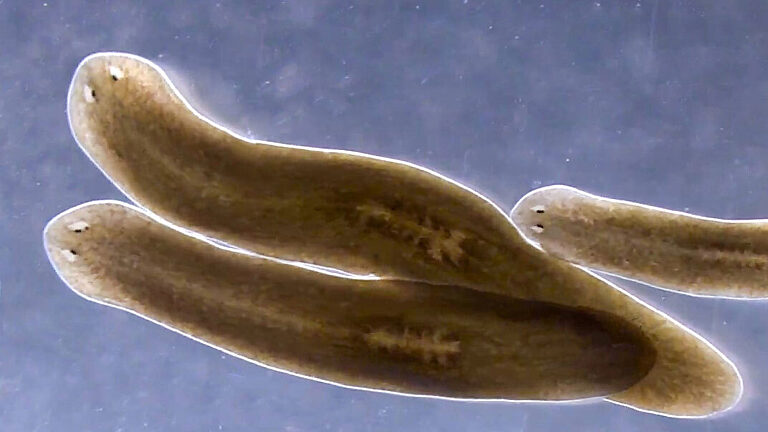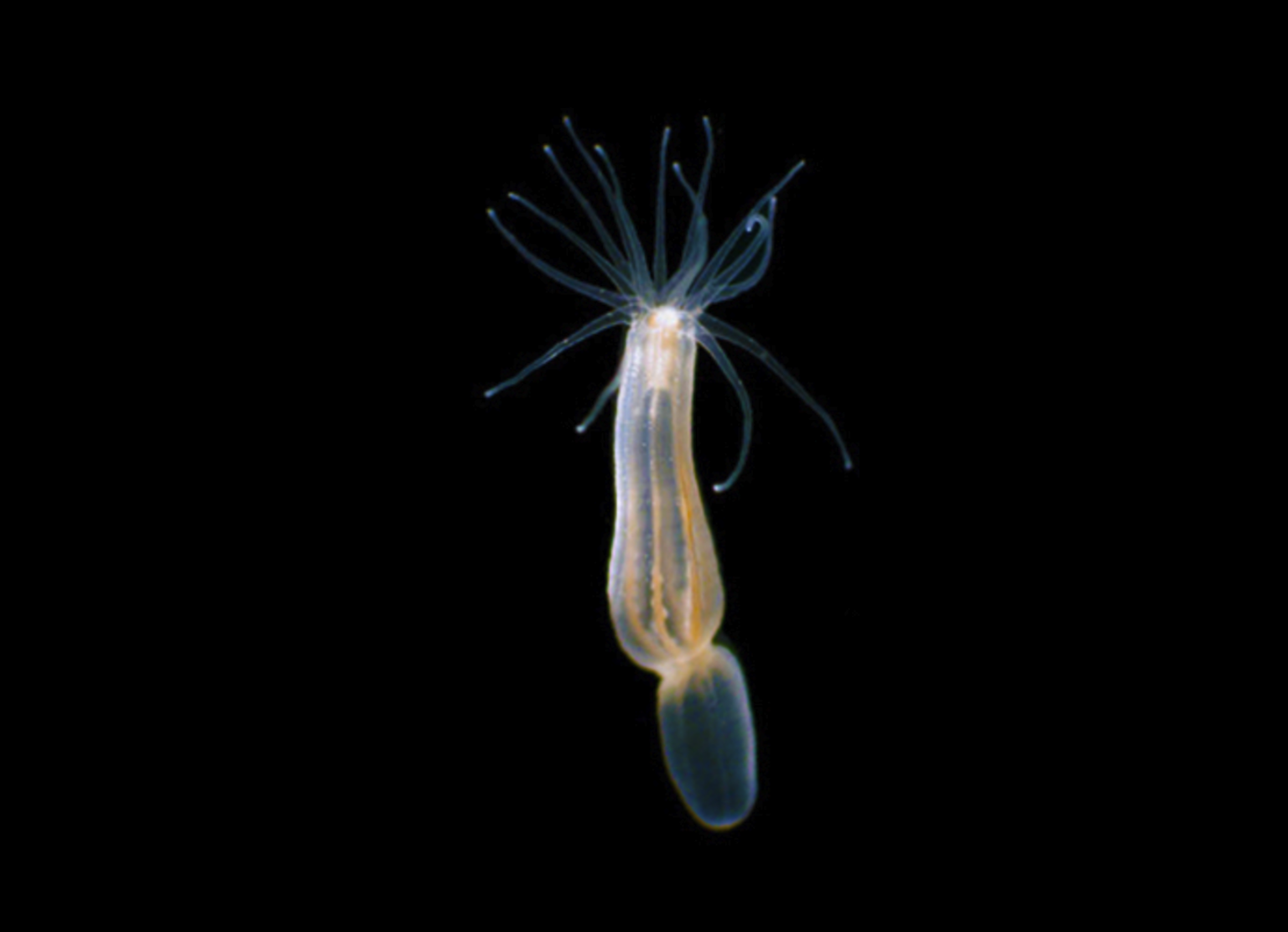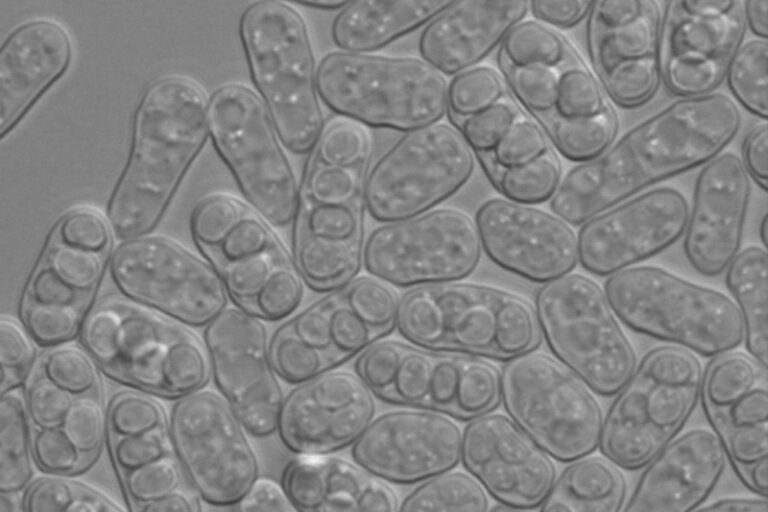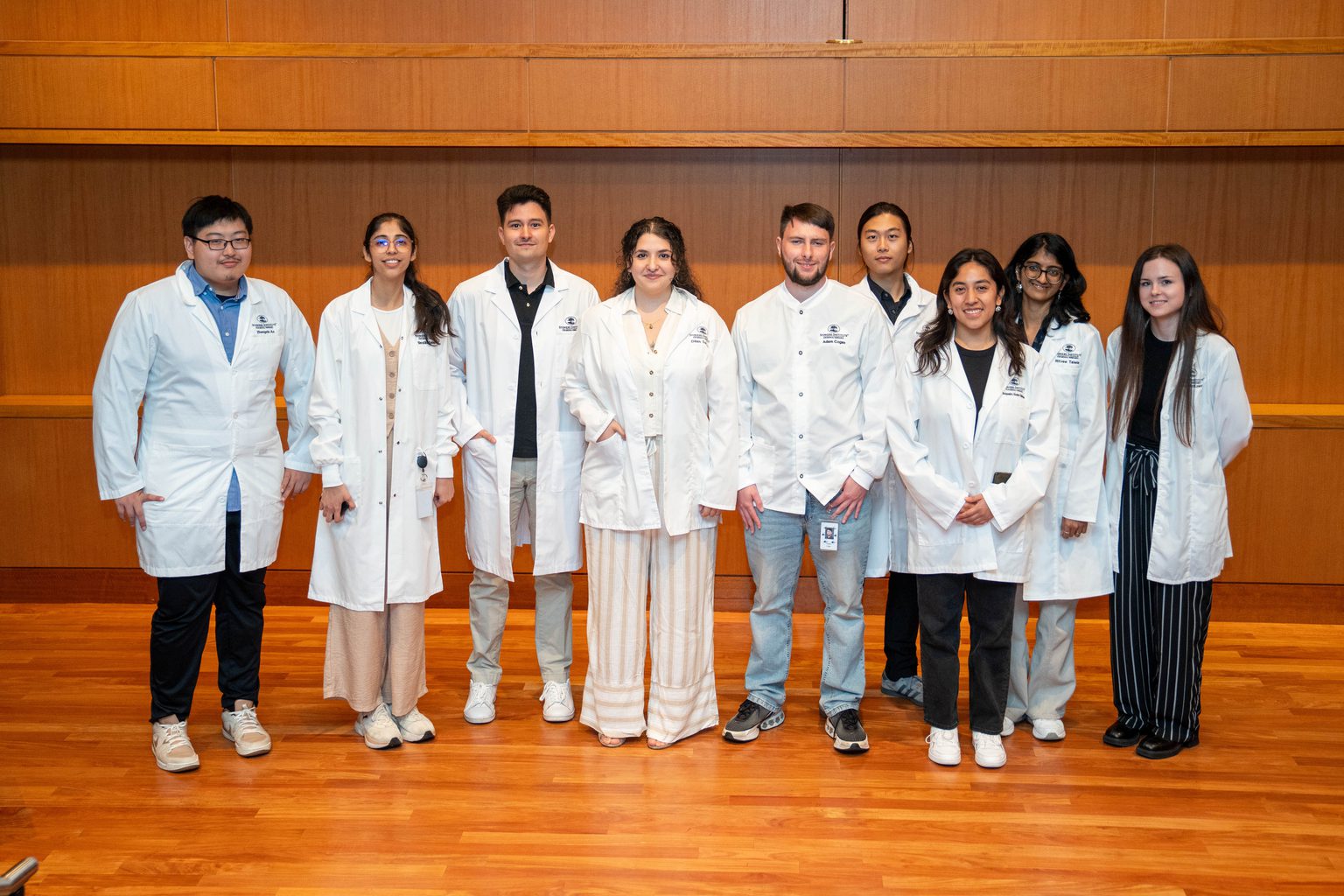News

18 December 2025
Plants, proteins, and new possibilities for antibiotics and agriculture
Stowers scientist discovers insights into how plants “talk” to bacteria in soil, possibly informing future antimicrobial therapies
Read Article
News
What can we learn from animals that are “immortal”? Stowers scientists are trying to find out.

Nature is filled with organisms that seem to never age. Giant sequoias, the tallest trees in the world, towering on California’s coast have been thriving for thousands of years. Certain species of coral can also survive the test of time. Koi fish and turtles can live for over 200 years. A species of jellyfish, aptly named the “immortal jellyfish” can even reverse biological aging.
Understanding the mechanisms underlying immortality may one day make it possible to delay the inevitable, or at the very least diminish aging’s impacts on health.

Planarian flatworms
Planarian flatworms are remarkable at regeneration. As they grow, occasionally a piece breaks off and generates a new worm. This continuous cycle of reproduction is enabled by a ubiquitous supply of stem cells. In fact, following a lethal dose of radiation, a single stem cell can rescue and restore an adult flatworm. Research from the lab of Stowers Institute President and Chief Scientific Officer Alejandro Sánchez Alvarado, Ph.D., investigates the potent powers of planarian stem cells that may one day enable regenerative capabilities in humans.

Nematostella and Coral
The starlet sea anemone or Nematostella vectensis is another seemingly immortal creature. Investigator Matt Gibson, Ph.D., studies Nematostella for clues to unlock how animal development evolved over 600 million years ago.
The Gibson Lab also studies the sea anemone’s cousin – coral. While coral is a sensitive species, subject to bleaching and subsequent death due to climate change, it can live for thousands of years under optimal conditions.

Bacteria and Yeast
Single-celled species of bacteria and yeast are the organisms of interest to several Stowers labs. The labs of Assistant Investigators’ Ameya Mashruwala, Ph.D., and Siva Sankari, Ph.D., research bacteria for their abilities to convene in communities and as symbionts, respectively. Yeast is widely studied at the Institute for insights into cell division, reproduction, and evolution. Researchers also study these species to explore links between genes and longevity. Gaining insight into the fundamental biology of single-celled organisms has the potential for a deeper understanding of our own biology, including aging.
News

18 December 2025
Stowers scientist discovers insights into how plants “talk” to bacteria in soil, possibly informing future antimicrobial therapies
Read Article
News
19 November 2025
Sankari believes the Stowers Graduate School is a place for emerging scientists to pursue their passions, contribute to discoveries, and achieve success.
Read Article
News

09 October 2025
An annual tradition marks the start of scientific discovery for the 2024-2025 class of Stowers Graduate School students.
Read Article